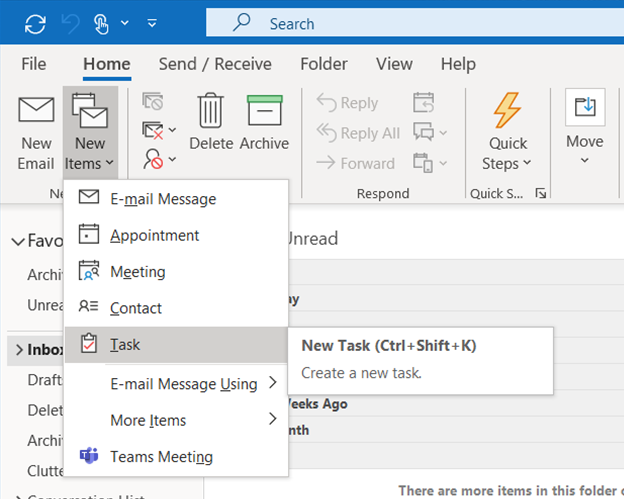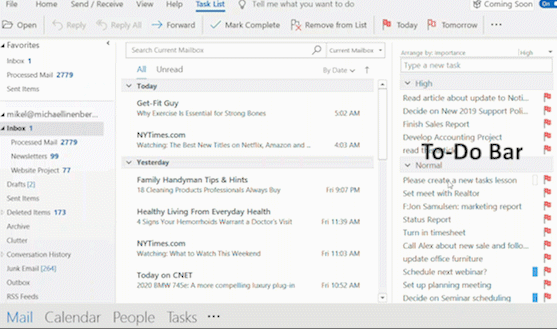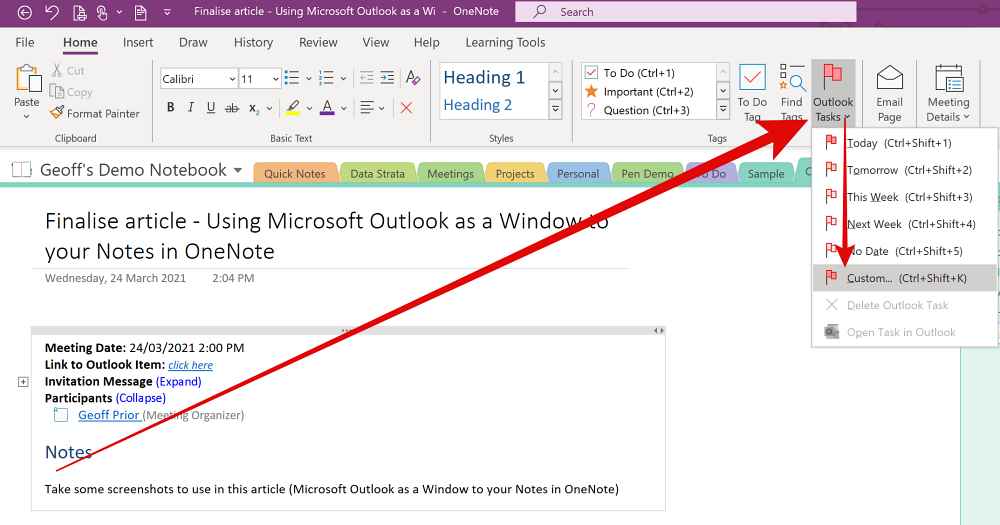


Now we get the received email using “Get email”. Further enhancements to these dates and times are outwith the scope of this post. These can be changed to suit and enhancements could be made to how you want to format and capture these parameters. Note:The use of the “Start Date Time” and “Due Date Time” have been created for 1 week from today(3rd March 2019 at the time of writing) in line with the title of the email “Create Report For Finance By 1 Week Today”. TriggerBody()? utcNow() addDays(utcNow(),7) triggerBody()? This is why a task is created then updated as you will see as we move through the Flow. We handle this in this way as the native action “Create a task” does not have the functionality to attach resources(at this time).
#How to create a task in outlook update#
If the email has attachments, get them from SharePoint and update the task with resource(s) and the description.If the email has attachments, save them to SharePoint, if not update the task and description.The following bullet-ed list will help you see where we are going with this. The above Flow has a few key tasks that all culminate in creating the Planner task that contains the body text, the assignee’s, the start date, the due date and the attached resources, if they exist. “Scope If Email Has Attachments Create Sharing Link”

“Scope If Email Has Attachments Save to SharePoint” The Flow will be triggered by an email, and in this example here is the email I am using to get it all going. You may want to create this for consistency and to make it easier to follow along. From Documents(Shared Documents), I have added a folder called “PlannerDocs”. Prerequisites:The use of a SharePoint Document Library is required. There will be times when the comments section of the action holds this data too. Note:Where I have used expressions, or even if there may be potential questions asked around what action provided the value for the dynamic content, I will feature these directly below each image in order. This Flow will still be create the task when there are no attachments.
#How to create a task in outlook how to#
So here is some information on the Flow before I step you through each action and how to create this for yourself. With 94 up votes and posts as recent as January 24th 2019, I thought I’d give this a go as I could see it’s feasibility, despite no template or process for it as of yet. Planner attach document from Outlook email It then became apparent after searching our forum, others were requesting extra functionality from Planner and Flow also. In this blog post, I will take you through a real word example where our community member js4 had asked for guidance on how to create planner tasks from email. One of the many great things about being a Flow Community Contributor and having a love for building Flows, is that there are countless opportunities to create Flows for others. When the recipients received your sharing invitation and accepted it, all of your shared tasks can be viewed by them.Hi everyone. It is optional to check the Request permission to view recipient’s Tasks folder box.ģ.

Make sure that the Allow recipient to view your Tasks folder box is checked Ģ. Compose the content and then click Send button to send it.ġ. Click To button to select the recipients that you want to share your tasks with. Then the Sharing invitation – Tasks window pops up. Or you can click Folder > Share Tasks in the Outlook 20 Ribbon after selecting the Exchange tasks.Ĭlick File > Folder > Share “Tasks…” in Outlook 2007. In Outlook 2007, please select Share Tasks… from the right-clicking menu. In Outlook 20, select the Exchange tasks folder under My Tasks section and right click on it, and then select Share > Share Tasks from the right-clicking menu. With Microsoft Exchange server, you can easily share your tasks with others in Outlook as follows.Ģ.


 0 kommentar(er)
0 kommentar(er)
